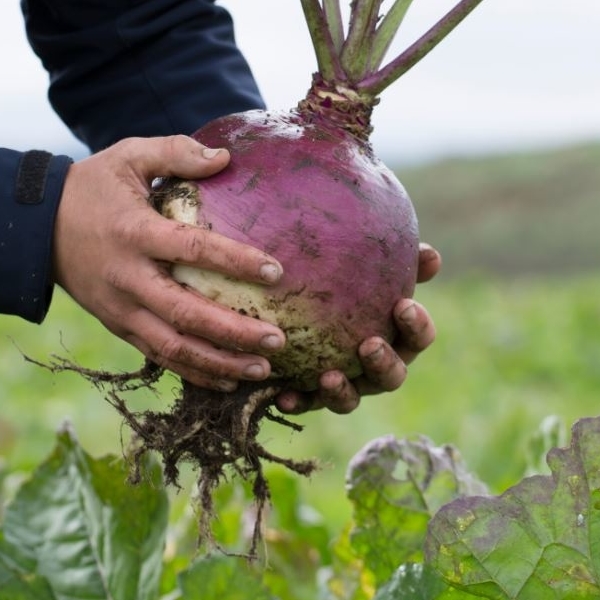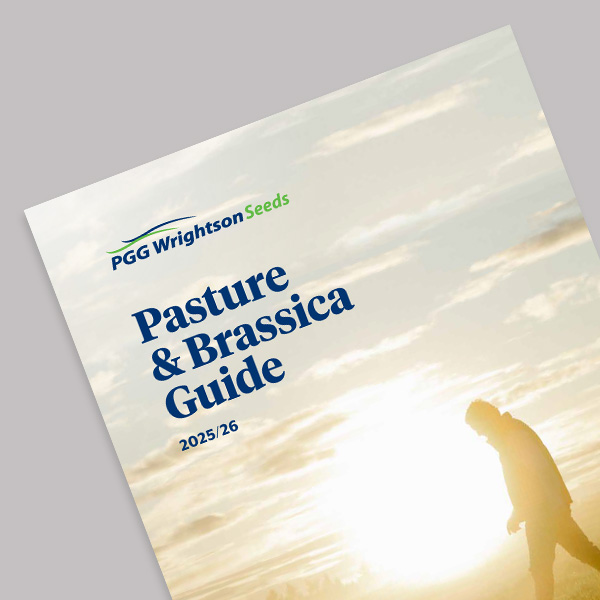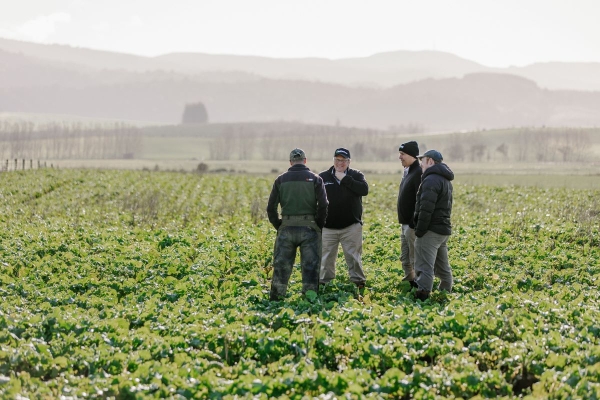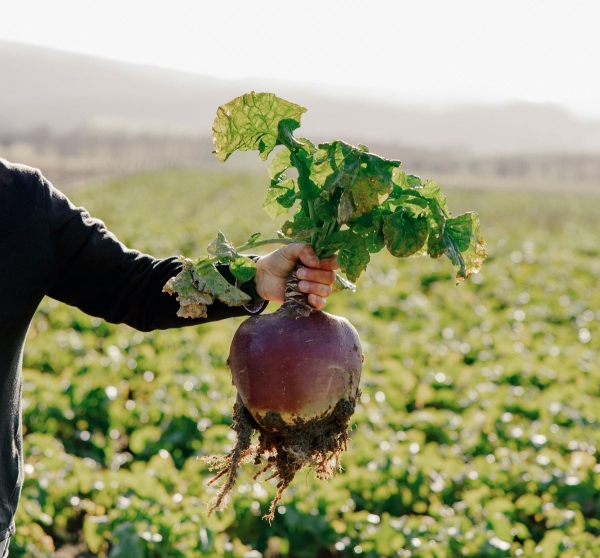Sowing and establishment of brassicas
Sowing Brassicas
- Allow the paddock to get a pasture or weed cover of 2000 kgDM/ha.
- Spray out with glyphosate at the correct label rate.
- Three days later, hard graze to remove vegetation prior to cultivation or drilling.
- If cultivating, use conventional farm practices that result in a fine, firm, residual-free seedbed.
- In cultivated situations, seed can be broadcast, then harrowed and rolled. (If using Cleancrop™ Brassica System, then apply Telar® post sowing).
- Best practice for direct drilling is to use a double spray programme. The initial spray out with glyphosate and usually a broadleaf herbicide occurs about 6 weeks before sowing. A second spray with glyphosate occurs prior to sowing to remove germinating seedling weeds (if using Cleancrop™ Brassica System, include Telar® with second spray), usually includes an insecticide and may require slug bait. Seed is sown at approximately 10 mm depth and then rolled. Seek advice for the appropriate use of chemicals.
- Once the crop is sown, it is important to monitor the crop and apply the appropriate herbicides and insecticides to remove any weed or insect problems.
For products within the Cleancrop™ Brassica System range (Cleancrop™ Hawkestone swede, Cleancrop™ Aspiring swede, Cleancrop™ Firefly kale, Cleancrop™ Sarge Kale, Cleancrop™ bulb turnip, Cleancrop™ Toto turnip, Cleancrop™ leafy turnip and Cleancrop™ rape), follow the latest Cleancrop™ Brassica System Guide for best practice management and the stewardship plan.
SWEDE SOWING RECOMMENDATIONS
Swedes should only be used in a first crop situation to prevent dry rot infection. A second crop alternative is kale and Pallaton Rapno®.
If clubroot is likely to occur, kale is the better alternative to swede cultivars.
If there is a high risk of either dry rot or clubroot infection in the second year, it is recommended to sow the paddock in either a pasture or cereal crop.
Swedes should be sown no earlier than 20 November. Earlier sowing combined with weather conditions can cause ‘vernalisation’, which means the plant believes it has been through winter and subsequently produces a seed head.
Fertiliser
Fertiliser requirements should be based on soil testing.
To allow a brassica crop to achieve its yield potential it is important to have the nutrient requirements of the crop met. This begins with a soil test at least 6 months in advance of sowing the crop, allowing enough time to correct soil pH through liming with the aim to be at least 5.6 and ideally between 5.8 and 6.2 for most brassicas. Key nutrients for brassica growth include nitrogen, phosphate and boron all of which generally need to be applied as fertiliser at the time of sowing, with additional follow up applications as required during crop growth. In most circumstances other nutrients such as sulphur and potassium are not required unless a soil deficiency is noticed when the soil is tested.
Crops should have at least 40-60 kg phosphate/ha available at sowing and nitrogen (N) requirements can range from 250 to 500 kg N/ha, which is available from the soil reserves or applied as fertiliser. While the total crop requirement for phosphorous (P) is quite low, it is vital during establishment and for shallow rooting brassicas. The application of P in a base dressing and down the spout at planting will provide a good response, particularly on low P soils.
Growing brassicas on effluent ground may allow for a significant reduction in fertiliser inputs, but again this should be based on soil testing and knowledge of crop requirements. Timing of nitrogen application is important and needs to be based on a true need for growth. Excessive nitrogen application can lead to nitrate poisoning, so when assessing fertiliser requirements for a brassica crop it is best to seek advice from a trusted advisor.




